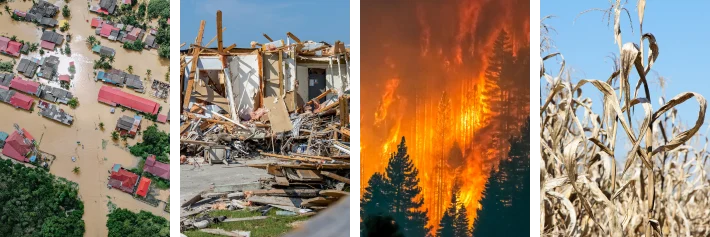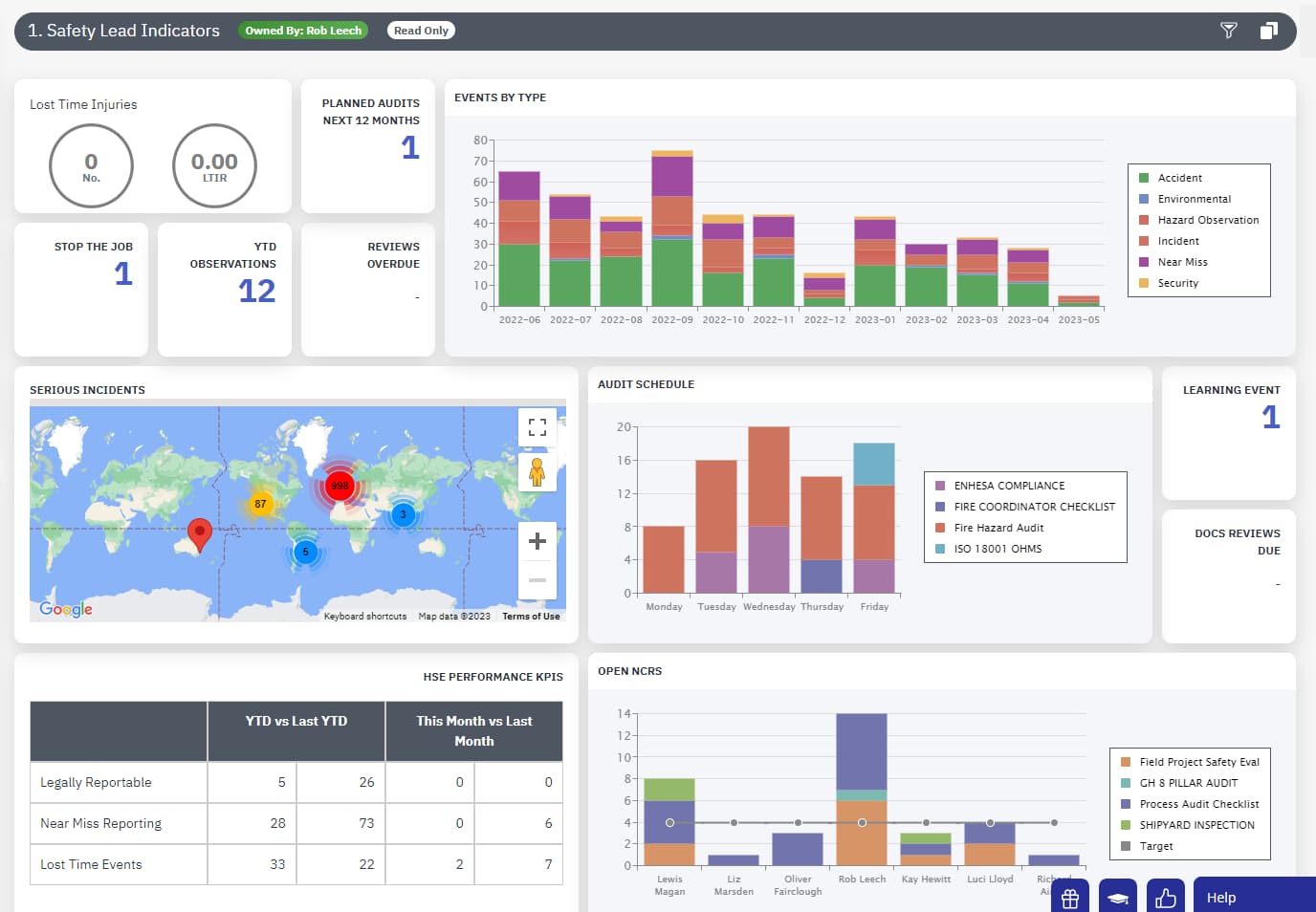Climate risk’s increasing importance in sustainability reporting

According to a recent report by the World Economic Forum, climate-related disasters have caused over $3.6 trillion in damage since 2000.
The same report goes on to state that without urgent action, global GDP could drop by up to 22% by 2100.
It’s near impossible to avoid the images of harrowing climate disasters. The Southern Californian wildfires in early 2025 are estimated to have cost $250 billion and destroyed over 40,000 acres of land.
In 2020 a series of devastating floods in South Asia caused the deaths of over 6000 people and caused $105 billion worth of damage across India, Pakistan and Sri Lanka. These figures don’t touch on the millions of people who were displaced due to evacuation of effected areas.
In Spain, torrential rain caused flooding leading to the deaths of over 200 people in October 2024, at a cost of more than $20 billion.
As the impact of climate change becomes clearer, climate risk will feature more prominently in the ESG and sustainability reporting requirements that organisations must meet.
But what exactly is climate risk? And how can organisations include it in their reporting?
This blog aims to answer these questions. We will start by examining the concept of climate risk, before seeing how it is increasingly being integrated into popular sustainability reporting frameworks.
Read on for more.
What is climate risk?
The EU Mission on Adaptation to Climate Change provides the following explanation of climate risk. This explanation is taken from the UN’s Intergovernmental Panel on Climate Change (IPCC):
“A climate risk (e.g. drought damage in agriculture) results from interactions between climate-related hazards (e.g. the frequency and intensity of droughts) with exposure (e.g. agriculture land) and vulnerability (e.g. drought resistance of crops, presence or absence of irrigation) of natural and human systems.”
Therefore, a climate risk is the result of the following factors: hazard, exposure and vulnerability.
The IPCC goes on to say that each of these 3 factors are subject to ‘uncertainty in terms of magnitude’ and ‘likelihood of occurrence’, effected over time by factors such as socio-economic changes and human decision making.
What are the different kinds of climate risk?
According to the Taskforce on Climate-Related Financial Disclosures (TCFD), there are considered to be 2 categories of climate risk;
- Physical Risk
- Transitional Risk
In this section, we will give you an overview of both categories, as well as their sub-divisions.
Physical Risk
Physical risk refers to the potential for adverse impacts on people, assets and eco-systems due to climate – related hazards.
This category is further sub-divided into:
- Acute hazards
- Chronic hazards
Acute hazards
According to the US Environment Protection Agency (EPA) acute hazards are those that are ‘event-driven’. These include (but are not limited to) the increased severity of extreme weather events such as:
- Cyclones
- Hurricanes
- Heat or cold waves (‘cold snaps’)
- Floods
- Wildfires
- Droughts

Chronic hazards
Chronic hazards are associated with longer-term shifts in climate patterns, such as:
- Higher global temperatures
- Rising sea levels
- Change in precipitation patterns
- Water scarcity
- Prolonged heatwaves
Transitional Risk
Transitional risk refers to the potential adverse consequences of transitioning to a lower-carbon economy. The Recommendations of the TCFD refers to the possibility of “extensive policy, legal, technology, and market changes” to address additional climate change related requirements.
Transitional risks may pose varying levels of financial and reputational risk to organisations. It chiefly depends on the nature, speed and focus of these changes, and how an organisation responds to them.
For example, organisations may expose themselves to litigation or regulatory penalties for failing to keep up with emissions reporting requirements.
Reporting Frameworks and Climate Risk
Now that we have an idea of what climate risk is, how is it being integrated into common sustainability reporting standards?
The Taskforce on Climate-Related Financial Disclosures (TCFD)
As mentioned earlier in this blog, the TCFD was the first to categorise climate-related risks into 1) physical and 2) transitional risks. It was established in 2015 by the G20 and Financial Stability Board (FSB).
It is a mandatory framework already implemented in the EU, Canada, South Africa, Japan, Singapore and South Africa. New Zealand and the UK have also announced that they will make it mandatory to disclose climate risk information in accordance with the TCFD by 2023 and 2025.
While the TCFD has officially disbanded as of November 2023, with the International Financial Reporting Standards (IFRS) Foundation taking over its remit, it remains the framework that many organisations (including in the UK) report to.
Climate risk reporting is a fully integrated part of the TCFD framework. It is structured around 4 pillars: governance, strategy, risk management, and metrics and targets. In ‘Strategy’, for example, organisations are encouraged to describe:
- “…the climate-related risks and opportunities the organisation has identified over the short, medium, and long term”.
- “…the impact of climate-related risks and opportunities on the organisation’s businesses, strategy, and financial planning”
- “… the resilience of the organisation’s strategy, taking into consideration different climate-related scenarios, including a 2°C or lower scenario”.
The Taskforce on Nature-related Financial Disclosure (TNFD)
Another sustainability framework that has integrated climate risk reporting is the Taskforce on Nature-related Financial Disclosure (TNFD). The TNFD was formally launched in 2021 as a market-led initiative, receiving endorsements from the G7 and G20, among others. It follows the same 4 pillar structure as the TCFD. Nature-related physical risks can be the result of the physical degradation of nature, as in pollution or deforestation.
The TNFD has aligned with the TCFD to integrate reporting climate and nature risks and opportunities. Nature-related risks are often connected to climate-related risks. To this end, the TNFD also shows climate change as one of the 5 key drivers of nature change.
One example offered in the TNFD Nature-related Risk & Opportunity Management and Disclosure Framework is that of deforestation contributing to the rise in greenhouse gas emissions.
Other integrated frameworks and standards
There are other frameworks and standards that have incorporated climate risk into their sustainability reporting:
International Financial Reporting Standards (IFRS) Sustainability Disclosure Standards
In 2021, the IFRS Foundation formed the International Sustainability Standards Board (ISSB), an independent standard setting body. It has assumed responsibility for several other ESG frameworks and standards, including the TCFD.
The ISSB has built on the collective work of these frameworks and standards to issue the first 2 IFRS sustainability disclosure standards in 2023:
- IRFS 1 (General Requirements for Disclosure of Sustainability-related Financial Information)
- IRFS 2 (Climate-related Disclosures)
California SB261
In 2023, California enacted Senate Bill (SB) 261 – the Climate-Related Financial Risk Act. Under this act, companies with revenues over $500M must report climate-related financial risks and take necessary steps to mitigate them, with penalties up to $50K per incident. This must be done every other year.
These disclosures can be done in line with either TCFD or ISSB recommendations.
EU CSRD
The EUs Directive on Corporate Sustainability Reporting (CSRD) was published in 2023.
Under this directive, companies that meet certain size criteria must disclose information on the risks and opportunities that come from social and environmental issues. They also need to report on the impact of their activities on people and the environment.
The CSRD is bolstered by the European Sustainability Reporting Standards (ESRSs), which contain the reporting requirements for disclosure.
ESRS E1 – Climate Change, is broken down into climate change adaptation, climate change mitigation and energy. Under this standard companies must report on their climate-related impacts, risks, and opportunities.
Note that CSRD is based on the concept of double materiality, which highlights that risks and opportunities can be relevant from both a financial and non-financial standpoint.
Conclusion
As we have seen in this blog, climate-related risks are becoming a staple component of sustainability reporting, both regulatory and voluntary. As the ecological, social and financial effects of climate change become impossible to ignore, organisations must ensure that they have the capability to assess and report on their climate-related risks.
There are also significant opportunities for growth for organisations that lead the way in climate transition. The World Economic Forum report estimates that the market for green technologies and solutions will be valued at $14 billion by 2030, with competitive advantages for early adopters.
We all have to start somewhere.
EcoOnlines Climate Risk product lets organisations identify and assess physical climate risk exposure, providing a clear view of exposure across the entire organisation, down to individual assets.
Click the banner below to find out more:
About the author
Laura Fitzgerald
Content Marketing Manager





